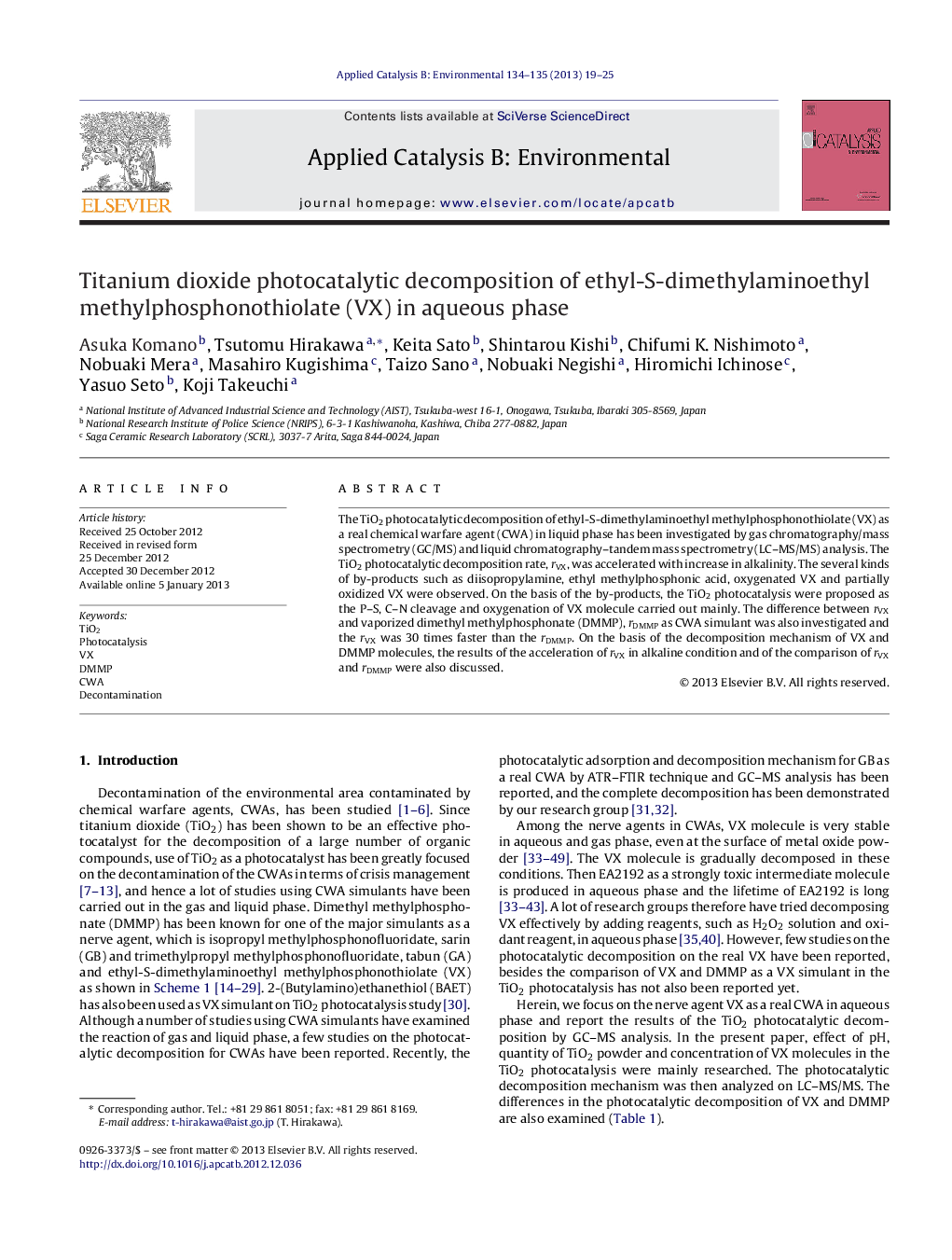| Article ID | Journal | Published Year | Pages | File Type |
|---|---|---|---|---|
| 45763 | Applied Catalysis B: Environmental | 2013 | 7 Pages |
The TiO2 photocatalytic decomposition of ethyl-S-dimethylaminoethyl methylphosphonothiolate (VX) as a real chemical warfare agent (CWA) in liquid phase has been investigated by gas chromatography/mass spectrometry (GC/MS) and liquid chromatography–tandem mass spectrometry (LC–MS/MS) analysis. The TiO2 photocatalytic decomposition rate, rVX, was accelerated with increase in alkalinity. The several kinds of by-products such as diisopropylamine, ethyl methylphosphonic acid, oxygenated VX and partially oxidized VX were observed. On the basis of the by-products, the TiO2 photocatalysis were proposed as the P–S, C–N cleavage and oxygenation of VX molecule carried out mainly. The difference between rVX and vaporized dimethyl methylphosphonate (DMMP), rDMMP as CWA simulant was also investigated and the rVX was 30 times faster than the rDMMP. On the basis of the decomposition mechanism of VX and DMMP molecules, the results of the acceleration of rVX in alkaline condition and of the comparison of rVX and rDMMP were also discussed.
Graphical abstractFigure optionsDownload full-size imageDownload as PowerPoint slideHighlights► The decomposition rate of VX in TiO2 photocatalysis in aqueous phase was accelerated with increase in alkalinity, the quantity of TiO2 and the concentration of VX. ► The decomposition mechanism of VX was mainly controlled by P–S, C–N cleavage and oxygenation. ► The decomposition rate of VX was 30 times faster than that of DMMP.
